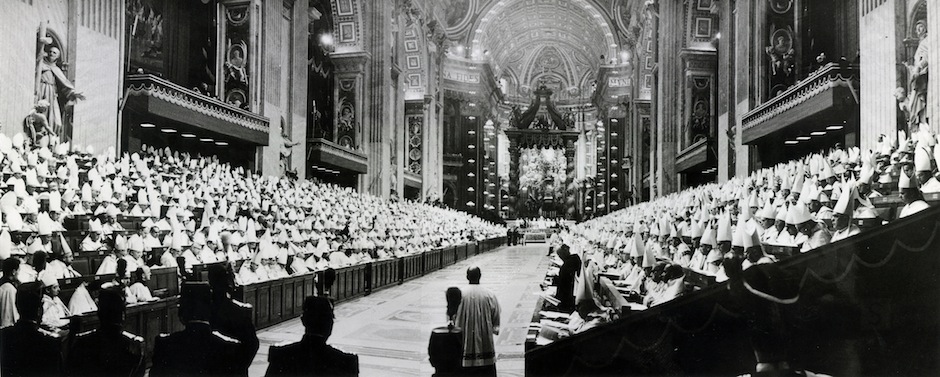A staunch Protestant apologist Douglas Beaumont recently published “Tiber Treading No More.” In it he describes how he ended up becoming Roman Catholic despite his valiant efforts to refute it. The tone of the article is positive and kind. As I read it I did not sense any harboring of ill will or grudges against Protestantism. Beaumont’s exodus out of Protestantism was the result of his investigation of foundational theological issues, sola fide and sola scriptura, and the inability of Protestantism to provide satisfactory answers.
In the article Douglas Beaumont briefly mentions how he first investigated Orthodoxy. He met with some Orthodox priests, attended the services, and even signed up for an introduction to Orthodoxy class. I wish he had written more about his exploration of Orthodoxy than just three brief paragraphs! Eventually, he turned away from Orthodoxy and began to move towards Roman Catholicism.
The Real Issues
Three reasons were given why he turned away from Orthodoxy: (1) its cultural divisions, (2) its inability to convene another ecumenical council, and (3) its non-Western character.
Beaumont expressed concerns about the cultural divisions in Orthodoxy. He was afraid of what would happen if he were to move away from the local Orthodox parish he had been attending. I’m not sure what he has in mind. That he would be denied access to the Eucharist? That he would be given the cold shoulder? I wish he had been more clear. I can report that this Asian American Christian from Hawaii has communed at Greek Orthodox, OCA, Bulgarian, and Antiochian Orthodox parishes all across the US. So for me Orthodoxy’s cultural divisions have not been as big an issue as Beaumont makes it to be. Thousands of other Protestant converts to Orthodoxy have had a similar experience. I will say that I do want to see more all English Orthodox liturgies all across the US. But this is really a minor issue. It seems that he confined himself to just one parish. Beaumont could have searched out the various Orthodox jurisdictional options and seen for himself the underlying doctrinal and liturgical unity that they all share.
Douglas Beaumont claims Orthodoxy lacks the unity that the Pope gives Roman Catholicism. While a common charge, it is a very debatable issue. Vatican II introduced radical changes to Roman Catholicism. The Tridentine Mass of 1570 was replaced with the Novus Ordo Mass of 1970. The Mass which once unified the faithful soon became a source of conflict and confusion. A number of traditionalist groups sought to retain the Latin Mass and were eventually excommunicated by the Pope. Others who were distressed by the modernizing features in the Vatican II Mass eventually found refuge and stability in the Orthodox liturgy. Just as there has been an exodus of Protestants to Catholicism, so also there has been an exodus of Catholics converting to Orthodoxy. Thus, the vaunted organizational unity of the papacy disguises the fractured state of worship among Roman Catholics. This is further compounded by the discrepancy between the modern Vatican II Mass and the ancient liturgies.
Orthodoxy’s jurisdictional differences are more administrative in nature than doctrinal. Orthodox churches all use the same ancient liturgies — Saint John Chrysostom or Saint Basil the Great – on Sunday mornings. It is quite common for priest from different jurisdictions to fill in for each other. For example in Hawaii, we have Father Jerome an OCA priest assigned to the ROCOR parish; when the local Greek Orthodox priest goes out of town Fr. Jerome will fill in. This is a common practice and nothing out of the ordinary. This issue of Orthodox “divisions” cannot be casually asserted as Roman Catholics are wont to do. Roman Catholicism’s administrative “unity” has often been overstated and its doctrinal diversity among its members understated. The administrative divisions in Orthodoxy do not contradict the overwhelming theological unity rooted in ancient Holy Tradition. Unlike Roman Catholicism which is using a new and innovative Mass, Orthodoxy retains the ancient liturgies used by the ancient churches.
Douglas Beaumont claimed that Orthodoxy lacks the ability to hold another council. But this is not the case. There is nothing to prevent present day Orthodoxy from holding another council that is authoritative and binding. For example, the Council of Jerusalem was convened in 1672 to address the theological challenge of Reformed theology. This council has been regarded as authoritative by Orthodox jurisdictions. Also, it should be noted that preparations are being made right now for a major Orthodox council in 2016. But the more important fact is that the Bishop of Rome was not the convener of any of the Seven Ecumenical Councils. Frankly, this should not be an issue that would lead a Protestant to Rome.
Beaumont understood the division between Roman Catholicism and Orthodoxy in terms of the West versus the East. The geographic distinction oversimplifies the differences between the two theological traditions. The more critical difference is their adherence to the church fathers. In my reading of Roman Catholic theology I noticed the strong influence of medieval scholasticism that diverged from the early fathers and Ecumenical Councils. I sensed in Roman Catholicism a disconnect from the early church fathers. Theologically, Roman Catholicism is more medieval and scholastic than patristic. Thousands of “Western” Christians have become Orthodox in recent years. In 1987, over two thousand Evangelicals were received into the Antiochian Orthodox Church. Orthodoxy is not so much “Eastern” as it is the Church Catholic.
Advice for Exiting Protestants
There is a hunger among many Evangelicals and Protestants for something deeper theologically and more rooted in the ancient Christianity. Where before people used to switch denominations but still remain Protestants, growing numbers today are leaving Protestantism altogether for Roman Catholicism or Orthodoxy. I have two concerns. One is that they may be drawn to Rome’s external unity and unaware of her internal divisions. The other is that they fail to ask which church has maintained continuity with the Church of the first millennium.
My advice to exiting Protestants is that they not be distracted by superficial issues. Rather than compare Orthodoxy against Roman Catholicism they should first learn as much as they can about the early Church of the first millennium. How did the early Christians worship? What did they believe about Christ and the Trinity? What did they believe about the Eucharist? How did they do theology? Then compare both Roman Catholicism and the Orthodox Church of today against the ancient Church and ask: Which church has faithfully kept the teachings of the Apostles? Did any of the early church fathers hold to the transubstantiation view of the Eucharist?
I encourage inquiring Protestants to investigate the historic role of the Bishop of Rome (the Pope). Did early popes exercise their magisterium (teaching authority) independently of the Ecumenical Councils and other patriarchates (Constantinople, Alexandria, Antioch, and Jerusalem)? Did any early pope claim the right to unilaterally alter the Nicene Creed and by his own authority – without any consensus whatsoever with the other patriarchal jurisdictions? Did any of the early popes claim an infallible and universal authority over all other bishops or was this a later development? These are important questions because to become Roman Catholic is to submit to the papacy. Orthodoxy views papal supremacy as a doctrinal novelty unknown in the early Church.
Exiting Protestants should take the time to observe and compare the liturgical life of the two traditions. One thing that disturbed me when I investigated Roman Catholicism was the eagerness with which some liberal Catholics sought to administer the Eucharist to non-Catholics like me! I knew the official teachings of the church and yet here were clergy
and religious not just questioning closed communion but actively disregarding it! It seems there are two Catholicisms: an official Catholicism and a grassroots Catholicism that often ignores the teachings of the Vatican. Another disturbing practice is the role of lay people serving as eucharistic ministers. While an accepted practice in Roman Catholicism, there is no precedent for this in the early church. Underneath Roman Catholicism’s external unity are troubling signs of rebellion, subversion, and syncretism. I found in Orthodoxy a liturgical coherence and doctrinal stability that I did not see in Roman Catholicism. This for me is powerful confirmation that Orthodoxy is indeed the one holy, catholic, and apostolic Church.
Robert Arakaki
See also: “Why I Did Not Become Roman Catholic: A Sort of Response to Jason Stellman”






Recent Comments